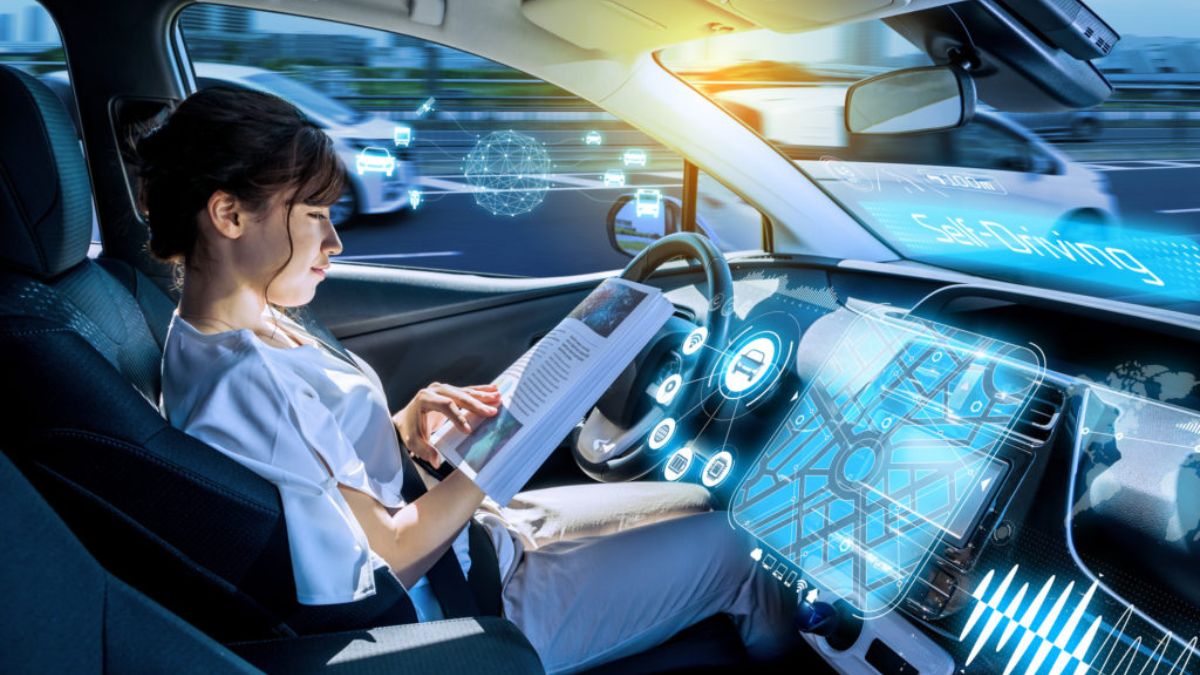Autonomous vehicles (AVs) are no longer a futuristic concept but a transformative force in the global transportation industry. In 2025, self driving cars, trucks, and shuttles are increasingly deployed in urban centers, logistics corridors, and experimental zones worldwide. Leading automotive manufacturers, technology companies, and mobility service providers are investing billions to accelerate autonomous vehicle adoption, aiming to enhance road safety, reduce congestion, and revolutionize mobility.
Global state of autonomous vehicles in 2025, including major players, technological advancements, regulatory frameworks, deployment projects, challenges, and future trends.
Global Market Overview
The global autonomous vehicle market was valued at USD 68 billion in 2024 and is projected to reach USD 214 billion by 2030, growing at a CAGR of approximately 21.9%. The Asia-Pacific region is the fastest-growing market, holding nearly 46% market share, while North America remains the largest revenue generator with around 40% market share.
By 2025, Level 2+ automation features are included in over 60% of new vehicles sold globally. Level 4 autonomous vehicles are starting to be deployed commercially, representing 1% of global vehicle sales, with expectations to rise to 5% by 2030.
Key Players and Global Deployment
United States
- Waymo leads with robotaxi services in Phoenix, San Francisco, Los Angeles, and Austin, offering over 250,000 rides weekly.
- Tesla operates a limited robotaxi service in Austin, Texas, using human safety drivers, with broader deployment pending regulatory approvals.
- Aurora Innovation is scaling autonomous freight trucking across Texas and the Southwest, with plans for interstate expansion.
China
- Baidu Apollo Go operates more than 1,000 autonomous vehicles in 11 cities, completing over 11 million robotaxi rides.
- Pony.ai is expanding its fleet to 1,000 robotaxis in major Chinese cities.
- WeRide has launched Level 4 Robobus services in Guangzhou and expanded to Middle Eastern markets.
Europe
- CAVForth in Scotland was the UK’s first autonomous bus pilot program.
- Lyft and Baidu are set to launch robotaxi services in Germany and the UK in 2026.
Middle East
- WeRide operates autonomous services in Abu Dhabi, Dubai, Riyadh, and AlUla, making the Middle East a rapidly emerging hub for AV deployment.
Japan
- Waymo began public road testing in Tokyo, collaborating with local operators for future robotaxi services.
- Japanese startup Tier IV is conducting Level 4 trials and robobus services across various cities.
READ MORE: The Global Rise of Electric Vehicles: Transforming Mobility & Sustainability
Technological Advancements
Autonomous vehicles rely on LIDAR, radar, high-resolution cameras, ultrasonic sensors, AI-driven perception algorithms, and V2X (Vehicle-to-Everything) communication systems. Key technological trends in 2025 include:
- Enhanced Sensor Fusion for complex urban environments.
- AI and Machine Learning for real-time decision-making.
- Simulation Platforms for safety validation.
- Edge Computing and 5G for ultra-low latency data processing.
Regulatory Developments
Global regulatory frameworks are gradually aligning to support AV deployments:
- China legalized Level 3 automation for commercial use in early 2025, accelerating AV commercialization.
- European Union’s General Safety Regulation mandates ADAS features and supports Level 3+ automation.
- Japan and South Korea are streamlining AV testing permits.
- In the United States, state-driven policies see California, Arizona, and Texas leading AV regulations.
Industry Challenges
Despite significant progress, the AV industry faces challenges:
- Regulatory Variance across countries and regions.
- Public Trust and Safety concerns.
- Cybersecurity Risks and data protection.
- High Operational Costs of scaling AV fleets.
Economic and Social Impact
Autonomous vehicles are projected to:
- Reduce traffic congestion by 40% in major urban centers.
- Cut global fuel consumption by up to 15%.
- Decrease accident rates by up to 90%.
- Generate cumulative revenues of USD 2.8 trillion by 2030.
AVs will also enhance mobility for elderly and disabled populations, contributing to more inclusive transportation ecosystems.
READ MORE: The Future of Automobiles: Electric, Smart & Sustainable Cars Revolutionizing 2025
Future Outlook (2025-2030)
- Expansion of Robotaxi Services in Europe, Asia-Pacific, and the Middle East.
- Growth in Autonomous Freight and Logistics due to driver shortages.
- Deployment of Level 3 and Level 4 AVs in controlled urban environments.
- Public-Private Partnerships to develop AV infrastructure.
- AI-powered Fleet Management Systems to optimize operations and costs.
Conclusion
In 2025, autonomous vehicles are reshaping global transportation, progressing from prototypes to real-world deployments. While challenges in technology, regulation, and public acceptance remain, the industry is advancing steadily. Strategic collaborations, regulatory alignment, and technological innovations are paving the way for a future where self-driving vehicles redefine mobility, making transportation safer, smarter, and more sustainable.









